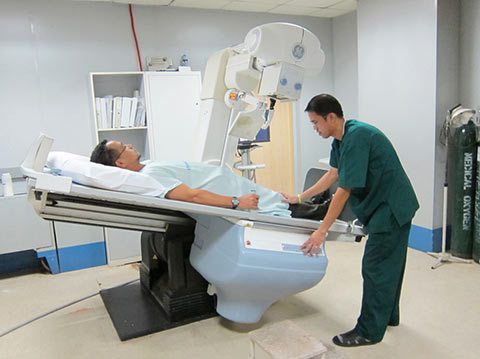A life-saving invention of the late 18th century, X-rays, still remain the first diagnostic procedure to identify deformities in the human body. Today, there are millions of X-rays taken worldwide on a daily basis.
X-rays are nothing but electromagnetic radiations that picture the bones using which a doctor suggests appropriate treatments. But, recent studies have discovered that cancer from radiation is actually true. So, how much radiation can one undergo without being at a risk of cancer?
Diagnostic tests such as X-rays and CT scans do expose your body to carcinogens. However, it depends on how frequently one is exposed to these ionizing radiations. There is definitely a microscopic increase in the risk of cancer for those who have regular X-ray examinations compared to those who hardly undergo any. Even then, the chances are so less and take years of radiation exposure from time to time for one to actually acquire the deadly disease.
On the other hand, a single CT scan contains a strong emission of powerful X-rays to help doctors achieve a 3-D image of the internal parts of a human body. CT Scans are usually recommended when medical practitioners look for better clarity.
When should X-rays and Scans be particularly avoided?
Pregnancy
Radiation during pregnancy could be a serious threat to both the mother and the fetus. Not only does this affect the to-be-born’s physical growth but also causes damage to its mental health. Usually, X-rays and scans are not recommended during the months of pregnancy. In unavoidable cases, a lead apron or a lead shield will be provided to cover the fetus from exposure. Please note that ultrasounds and MRIs don’t use electromagnetic radiations.
Puberty
Ovaries are sensitive organs that might easily get affected on exposure to powerful radiations. Often, a lead shield would be used before the rays hit the body. Teens during the age of puberty are usually advised not to take frequent X-rays.
Early stages of childhood
A kid’s tissues are tender compared to that of a fully grown. This is the reason that pediatricians suggest taking X-rays only in unavoidable situations when the necessity of an X-ray outweighs its risks.
While the research about the interlinks between X-rays and cancer is still ongoing, certain experts believe that it isn’t practical enough to figure this out as it takes years of follow-up patient case studies to actually understand the reasons that would have led to cancer.
From a commoner’s perspective, the maximum one can do is to monitor how frequently an X-ray or scan is taken to avoid unnecessary radiation exposure.



















